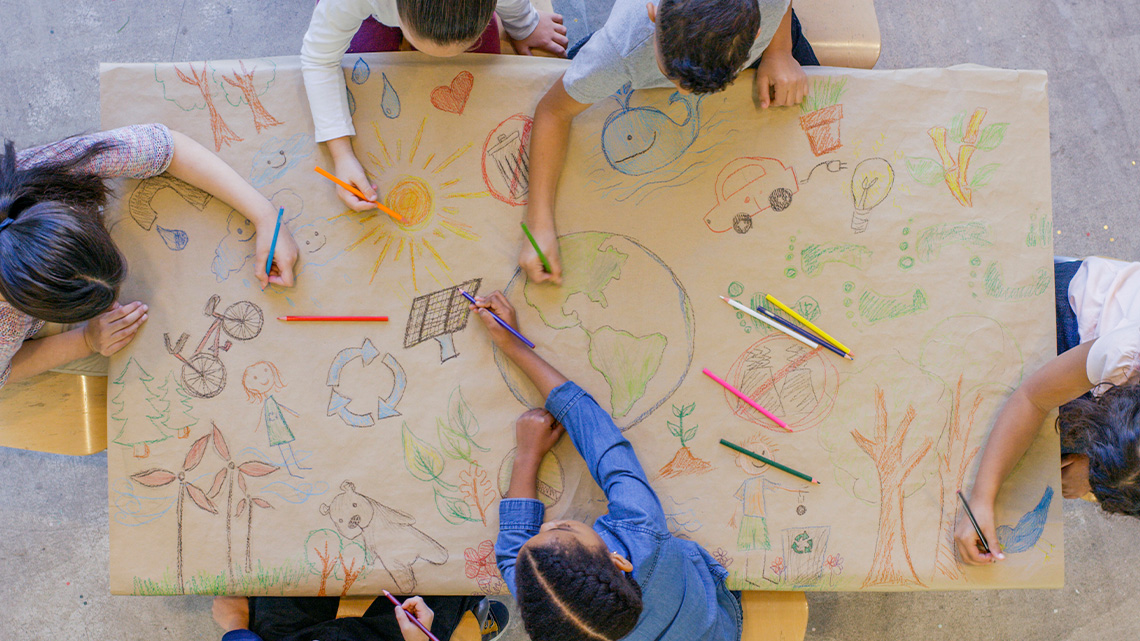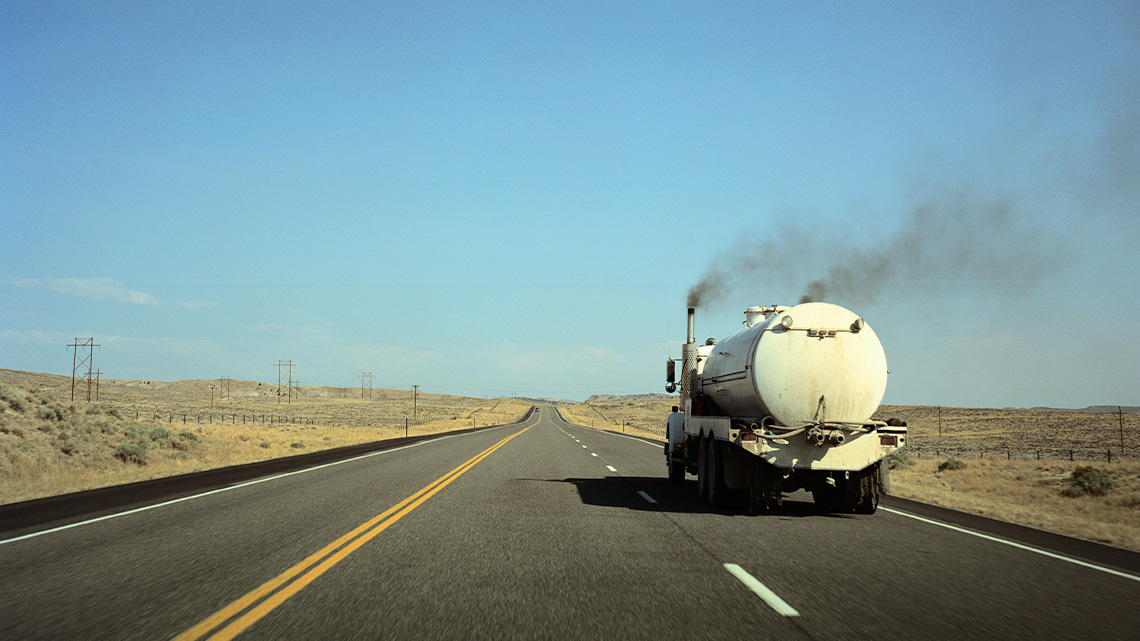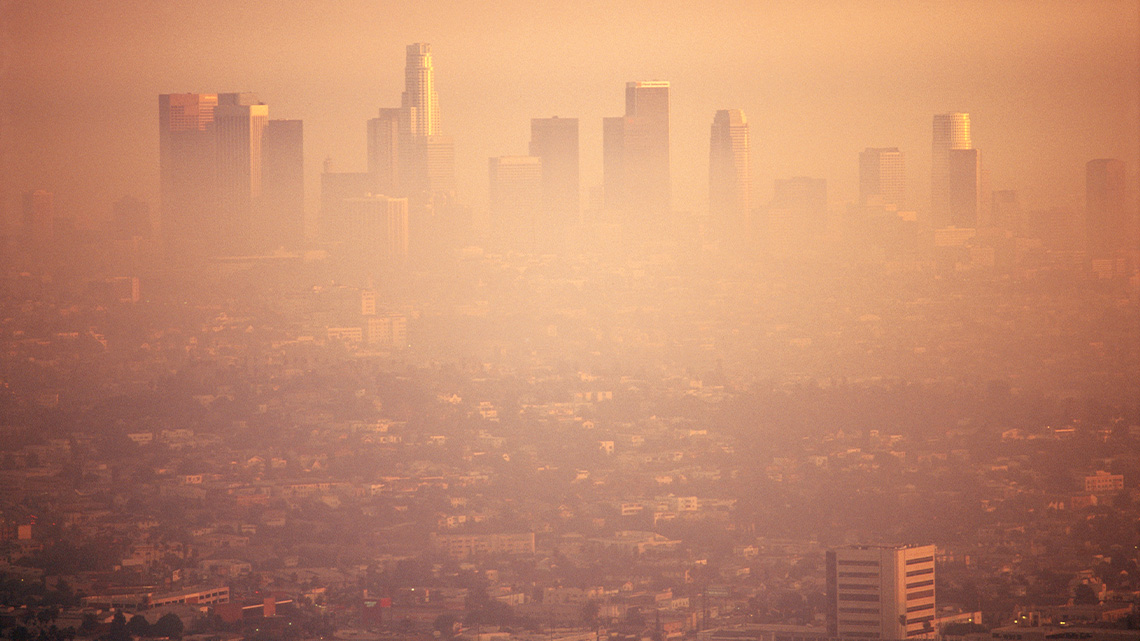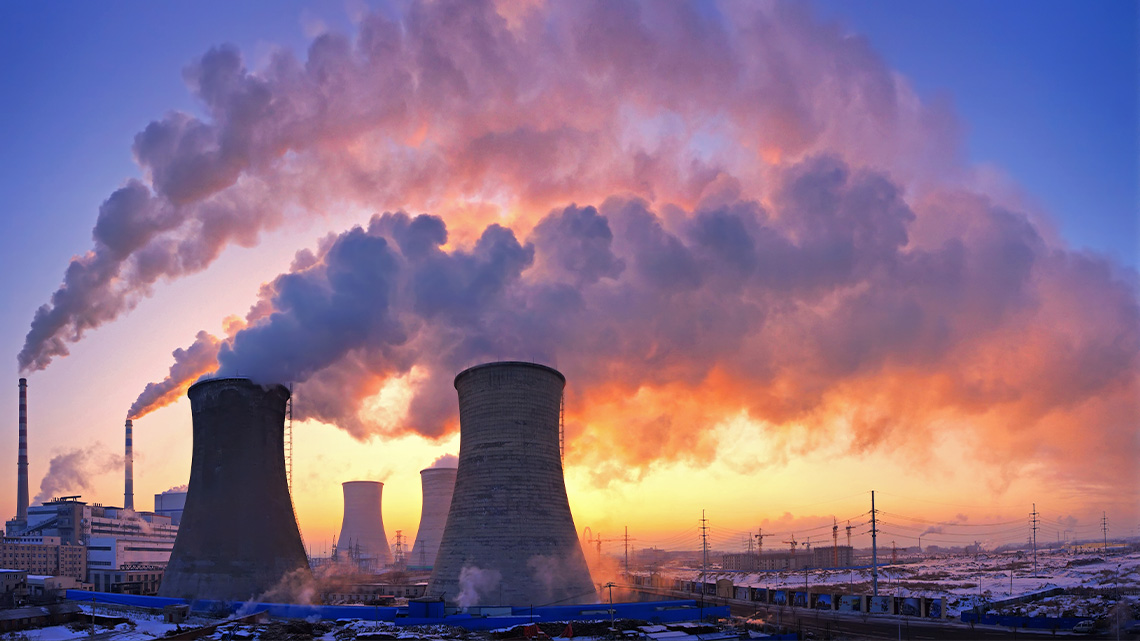Minds On
Let’s get started!
Examine the following image.
What types of transportation do you notice?
Brainstorm different ways people might move from one place to another.
Record your ideas digitally, orally, or on paper.

Four scenes are presented: Scene 1 has two sidewalks where a child is biking, a child is walking, and a child is rolling in a wheelchair. Scene 2 is a street corner where a mini-van, a public bus, and an airplane are present. Scene 3 shows a child wearing a helmet and riding a horse. Scene 4 shows a child paddling in a kayak. There is a ship in the background.
Action
Types of transportation
People travel in different ways on land and water and in the air. Let’s explore all the different ways people may choose to travel in the following image list!
On land

A poster with many different modes of transportation on land. The transportation methods include: a car, a truck, a motorcycle, a bus, a streetcar, an electric train, a bicycle, a skateboard, rollerblades, and a horse and buggy.
In and on water

A poster with many different modes of transportation in and on water. The transportation methods include: a motorboat, a sailboat, a ship, a submarine, a canoe, and a paddle board.
In the air

A poster with many different modes of transportation in the air. The transportation methods include: an airplane, a hot air balloon, a helicopter, and a blimp.
Simple machines
Simple machines help people do work with less effort or force. Let’s explore the 6 simple machines.
The simple machines are:
- the lever
- the pulley
- the inclined plane
- the wheel and axle
- the wedge
- the screw

Here are six types of simple machines. Pulley: A learner is using a pulley to lift a weight. An arrow pointing down shows that the learner is pulling down on the rope. An arrow pointing up shows that the object is being lifted. Inclined Plane: A learner is pulling a weight wrapped with a rope up an inclined plane towards herself. An arrow pointing up shows the direction of movement. Lever: A learner is sitting on one end of a lever with an arrow pointing down. A weight is on the other end with an arrow pointing up. Wedge: A person is using an axe to cut a log into two pieces. An arrow shows the downward direction of the axe. Two arrows, one to the right and one to the left, show the direction the chopped pieces of wood fall. Wheel and Axle: A learner is pushing a wheel that is on an axle. The arrow shows the circular movement. Screw: A learner is applying downward force while moving the handle in a circular motion to screw the threads of a device into the ground.
What is a wheel and axle?
In this Learning Activity, we will focus on the wheel and axle.
The wheel and axle is a simple machine that is used in many forms of transportation.
The wheel and axle is made up of a wheel, or a round disk, and a rod that goes through the wheel.
Different forms of transportation use the wheel and axle because it makes it easier to travel far distances, quickly, and with little effort.
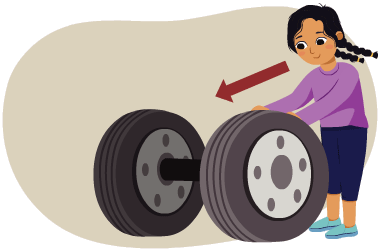
A learner is pushing one of two wheels attached to the ends of an axle. The wheels move forward and back. An arrow shows she is pushing forward.
Return to the list you explored of different types of transportation.
Can you identify 2-3 examples that have a wheel and axle? How do they make work easier?
Record your ideas using a method of your choice. If possible, share your ideas with a partner.
Many transportation options that use a wheel and axle need an energy source like fuel to run smoothly and efficiently. One kind of fuel is gasoline. Explore the following carousel of transportation methods. Each of these methods of moving use wheels and axles. They also often use gasoline as fuel!
However, gasoline is a fuel that creates air pollution!

Teacher A and Teacher are discussing pollution. Teacher A asks, ‘What’s air pollution? How does transportation cause air pollution?’ Teacher B responds ‘Great questions, Teacher A! Let’s explore.’
Air pollution
Air pollution is when gases, dust, smoke, or odors get into the air.
When the air is polluted, it can become unsafe for living things to breathe.
Check out the following carousel to explore where some air pollution is made.
Air pollution comes from different sources including cars and other forms of transportation that use gasoline (fuel).
Did You Know?
Did you know?
Some cars, for example, burn gasoline to make the wheel and axle turn. Burning gasoline creates lots of power to move the car. However, burning gasoline also releases dangerous chemicals into the air.
These chemicals pollute the air and cause the temperature of the Earth to rise. This effect is known as global warming.
A warmer planet could affect life on Earth in different ways including:
- shrinking sea ice and ice caps
- rising sea levels
- more rainfall
Some of these changes might make it harder for living things, including humans, to adapt to their changing climate.
Cars burn gasoline, which releases chemicals in the air. This is one form of air pollution.
The good news is that people can choose more sustainable and environmentally friendly ways to travel.
For example, transportation choices with low environmental impact are cycling and human-powered or active forms of transportation. Let’s explore low environmental impact modes of transportation in the following carousel.
Electric cars also pollute the air less. This is because they are powered by a rechargeable battery instead of gasoline.

Electric car
Since electric cars do not burn gasoline, they do not release chemicals into the air.
There are also hybrid cars that have an electric engine and a gasoline engine.
Let’s try some sorting!
Place the cards into categories that best match.
Sort the following forms of transportation.
Choose “low” if the transport option has a low environmental impact.
Choose “high” if the transport option has a high environmental impact.
Pause and Reflect
What about when you can’t use active transportation?
What if active transportation isn’t an option? Remember that active forms of transportation are transportation choices with a low environmental impact like cycling.
If possible, discuss your ideas with a partner.
Press ‘Possible Answer’ to consider some ideas.
Sometimes active transportation is not an option. In these cases, people might explore the option of taking public transportation or carpooling.
Public transportation might include taking a bus, streetcar, subway, or another type of train.
Carpooling is sharing a car so that more than one person travels in a car.
Both options might involve using a vehicle that uses gasoline. But they are considered to have a lower impact on the environment because they reduce the number of vehicles on the road.
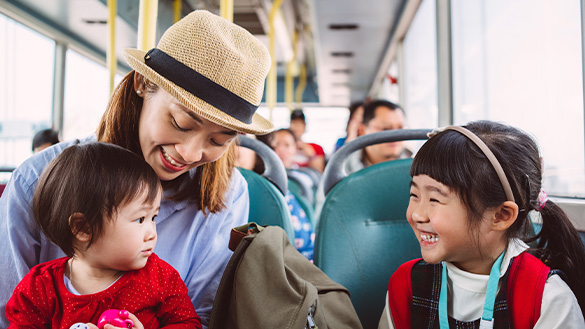
Using public transit like buses can help the environment
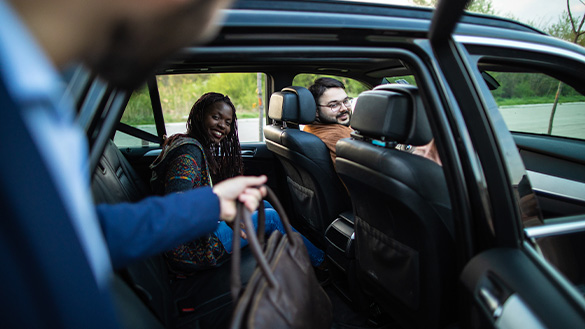
Carpooling together in the same car can help the environment
Innovation in Canada
This learning activity features emerging technologies, STEM contributions, and Canadian innovations that are making a difference.

Learning about issues that can affect the environment can help people understand how to protect it.
The David Suzuki Foundation is a Canadian organization that does just that!
The organization was founded by David Suzuki, who is a Canadian environmental activist.
The organization does research to help people understand and care for our planet. This includes exploring sustainable transportation options throughout Canada.
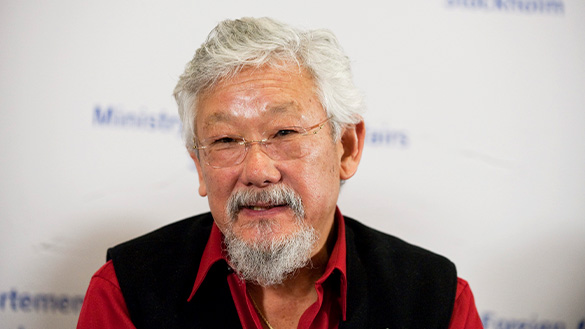
David Suzuki, a famous Canadian environmental activist
The organization works with the government and businesses to get funding for sustainable transportation options throughout Canada including electric vehicles, public transportation, and active or human-powered transportation.
For example, in Toronto, the organization worked with local groups to create safe bike lanes along busy roads.

Consolidation
Putting it all together
Scenario time!
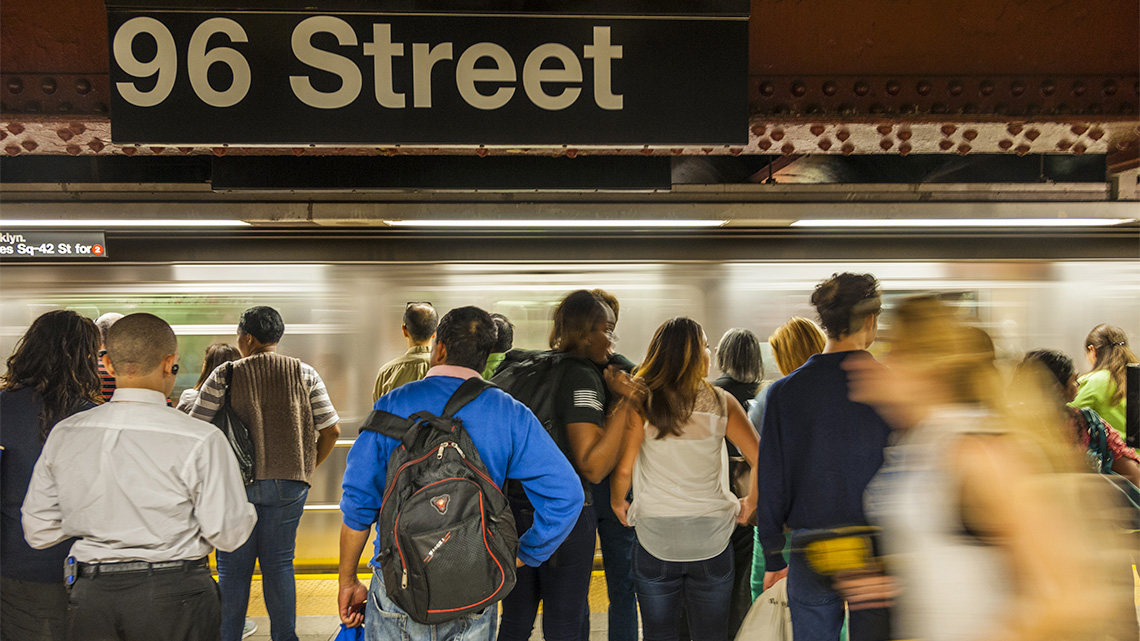
A group of people is travelling to an event in another city.
They have the following options to:
- take public transit
- rent or borrow a car
Which one do you think is their most sustainable transportation option? Explain your thinking.
Record your response digitally, orally, or on paper.

Considering your learning
Use the following questions to consider what you have learned:
- How does the wheel and axle make work easier?
- How does transportation impact the environment?
- What types of transportation are better for the environment? Why?
Record your responses digitally, orally, or on paper.
Reflection
How do you feel about what you have learned in this activity? Which of the next four sentences best matches how you are feeling about your learning? Press the button that is beside this sentence.
I feel…
Now, record your ideas about your feelings using a voice recorder, speech-to-text, or writing tool.
Discover MoreSharing your learning
Create a message that will encourage the people in your community to explore more sustainable transportation options.
Your message should include:
- information about the effects of gas-powered transportation on the environment
- sustainable transportation options to consider
Record your message digitally, orally, on paper or using another method of your choice!
